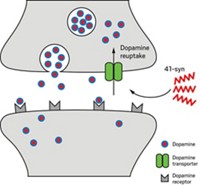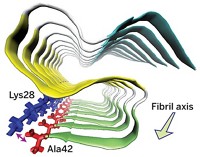Advertisement
Grab your lab coat. Let's get started
Welcome!
Welcome!
Create an account below to get 6 C&EN articles per month, receive newsletters and more - all free.
It seems this is your first time logging in online. Please enter the following information to continue.
As an ACS member you automatically get access to this site. All we need is few more details to create your reading experience.
Not you? Sign in with a different account.
Not you? Sign in with a different account.
ERROR 1
ERROR 1
ERROR 2
ERROR 2
ERROR 2
ERROR 2
ERROR 2
Password and Confirm password must match.
If you have an ACS member number, please enter it here so we can link this account to your membership. (optional)
ERROR 2
ACS values your privacy. By submitting your information, you are gaining access to C&EN and subscribing to our weekly newsletter. We use the information you provide to make your reading experience better, and we will never sell your data to third party members.
Materials
Single Amino Acid Forms Fibrils
Amyloid Disease: Phenylalanine aggregates may have a role in phenylketonuria
by Celia Henry Arnaud
June 25, 2012
| A version of this story appeared in
Volume 90, Issue 26

The amino acid phenylalanine assembles into toxic fibrils, researchers at Tel Aviv University and the University of Zurich report (Nat. Chem. Biol., DOI: 10.1039/nchembio.1002). This is the first time that individual amino acid molecules have been shown to assemble into fibrils.
The findings suggest that the disease phenylketonuria, which is characterized by phenylalanine accumulation and may lead to severe problems with brain development, could be a type of amyloid disease, which is caused by toxic protein fibrils. The work could lead to possible treatments for phenylketonuria.
Ehud Gazit, Lihi Adler-Abramovich, and coworkers observed millimolar concentrations of phenylalanine self-assemble into fibrillar structures. The fibrils have a positive response to the dyes Congo red and thioflavin T, which are standard tests for amyloids. The fibrils also elicit cytotoxic and immunological responses in rodents and rabbits.
The structures differ slightly from other amyloids, however. In conventional amyloids, hydrogen bonds that hold fibrils together are oriented parallel to the fibril axis. In the phenylalanine fibrils, hydrogen bonds are instead perpendicular to the axis.
The lack of amide bonds in the single-molecule-based fibrils likely accounts for the different orientation, Gazit says. Unlike in peptide-based fibrils, “the interactions here apparently stem mainly from side-chain interactions that lead to alternative packing,” he adds.
The researchers found the single-molecule-based phenylalanine fibrils in postmortem brain tissue from individuals with phenylketonuria. “The implications are significant,” Gazit says. If phenylketonuria is indeed confirmed to be an amyloid disease, it “may be treated not only by a very severe diet but also by the use of antiaggregation compounds that are being developed for other indications.”
“The finding that phenylalanine assembles into toxic fibers is striking,” says David S. Eisenberg, an amyloid expert at UCLA. The new study “gives strong evidence that phenylketonuria is an aggregation disease. The mechanism of toxicity of phenylalanine fibers could be quite different than in other diseases, though, because it appears that these fibers may have a different structure than classical amyloid.”




Join the conversation
Contact the reporter
Submit a Letter to the Editor for publication
Engage with us on Twitter